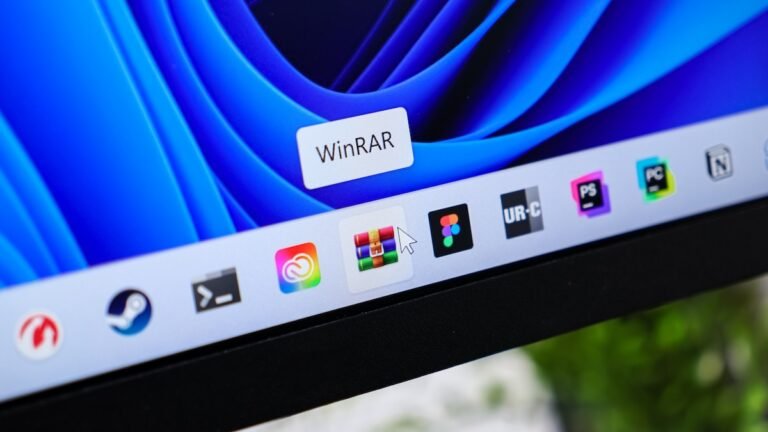Summary Points
-
Zero-Day Exploitation: A Russian cyber threat group, RomCom, is exploiting a WinRAR zero-day vulnerability (CVE-2025-8088) involving a path traversal flaw to target organizations in Europe and Canada, primarily through spearphishing emails.
-
Vulnerability Details: CVE-2025-8088 allows attackers to create archives that mislead WinRAR into extracting files to an attacker-defined path, potentially deploying backdoors like SnipBot and Mythic Agent.
-
Mitigation Response: The vulnerability was reported by cybersecurity firm ESET, and a patch was quickly released on July 30, with a beta version available just a day after the initial notification.
- Broader Context: This incident is part of a trend where RomCom has previously targeted various sectors in Europe and North America, utilizing similar zero-day exploits, emphasizing the ongoing risks associated with software vulnerabilities.
Problem Explained
Recent investigations by the cybersecurity firm ESET have unveiled that a Russian threat group, known as RomCom (also referred to as Storm-0978, Tropical Scorpius, or UNC2596), has been exploiting a critical zero-day vulnerability in WinRAR, designated CVE-2025-8088. This path traversal flaw allows cybercriminals to manipulate file extraction paths within crafted archives, potentially allowing unauthorized access to sensitive data. ESET detected these targeted attacks as early as July 18, where spearphishing tactics were employed to send maliciously disguised resumes to key individuals across financial, defense, manufacturing, and logistics sectors in Canada and Europe, showcasing the attackers’ meticulous reconnaissance efforts.
In response to this threat, ESET promptly reported the vulnerability to WinRAR developers, resulting in a swift patch release on July 30, following a beta version rollout just days after the notification. Fortunately, none of the identified targets experienced compromises; however, the archives contained sophisticated backdoors such as SnipBot, RustyClaw, and Mythic Agent, designed to activate upon successful exploitation. This incident highlights the growing trend of cyberespionage campaigns leveraging zero-day vulnerabilities, further evidence of RomCom’s history of orchestrating similar attacks on Western organizations.
What’s at Stake?
The exploitation of the WinRAR zero-day vulnerability CVE-2025-8088 by the Russian threat group RomCom poses substantial risks not only to targeted organizations in Europe and Canada but also to a broader array of businesses, users, and institutions that may inadvertently share operational environments or customer bases with these victims. If exploited successfully, the attackers could embed backdoors—such as SnipBot and RustyClaw—allowing for further infiltration and compromise of interconnected networks, thereby catalyzing a cascading effect of data breaches, operational disruptions, and reputational harm across the supply chain. Given the sophistication of spearphishing techniques employed, various entities—especially those in finance, defense, manufacturing, and logistics—must remain vigilant, as even marginal connections to infected organizations could render them vulnerable to secondary attacks or unauthorized data access. The rapid dissemination of this vulnerability underscores an urgent need for robust cybersecurity measures; industries must not only promptly apply patches like those for CVE-2025-8088 but also enhance threat detection protocols to mitigate the risks posed by state-sponsored cyberespionage campaigns.
Possible Actions
In the rapidly evolving landscape of cybersecurity threats, the exploitation of vulnerabilities such as the WinRAR zero-day by Russian hackers underscores the critical need for timely remediation.
Mitigation Strategies
- Immediate Patching: Deploy software updates to address vulnerabilities without delay.
- Incident Response Planning: Establish a comprehensive incident response plan that includes procedures for identifying, containing, and eradicating threats.
- Network Segmentation: Limit the spread of an attack by implementing network segmentation to isolate critical systems.
- User Education: Train staff on recognizing phishing attempts and other social engineering tactics that could lead to exploitation.
- Intrusion Detection Systems: Utilize advanced threat detection tools to monitor for unusual activity indicative of breaches.
NIST CSF Guidance
NIST’s Cybersecurity Framework (CSF) emphasizes the need for continuous monitoring and assessment of vulnerabilities. For further insights, refer specifically to the NIST Special Publication 800-53, which provides a robust catalog of security and privacy controls.
Continue Your Cyber Journey
Discover cutting-edge developments in Emerging Tech and industry Insights.
Understand foundational security frameworks via NIST CSF on Wikipedia.
Disclaimer: The information provided may not always be accurate or up to date. Please do your own research, as the cybersecurity landscape evolves rapidly. Intended for secondary references purposes only.
Cyberattacks-V1

